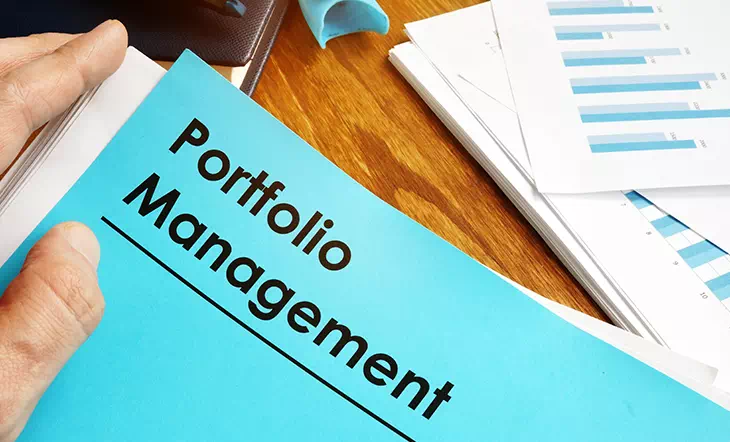Even though there is so much talk about investing, it is still easy to feel overwhelmed. You may find yourself unsure about what actually works. The truth is, cutting through the noise can be tough. However, your investment strategy does not have to be complicated to be effective. In fact, the simpler it is, the more likely you are to stay consistent and see real progress toward your financial goals. It all starts with a clear plan, a bit of patience, and the right guidance.
You can always talk to a financial advisor to tailor advanced investment strategies that suit your financial goals and risk appetite. In the meantime, this article discusses a few smart investing tips to help you invest and potentially earn better returns.
Table of Contents
Below are 6 smart investing tips to improve your investment approach:
Tip #1: Focus on making your investments more tax-efficient
The tax you pay on your returns can bring down your profits to a great extent. One of the simplest and most effective ways to reduce your tax burden is through tax-advantaged retirement accounts. For example, traditional 401(k) plans and traditional Individual Retirement Accounts (IRAs) allow you to make contributions with your pre-tax income. This lowers your taxable income in the current year and helps you grow your investments tax-deferred until you start withdrawing the funds in retirement. On the other hand, Roth IRAs and Roth 401(k)s are funded with after-tax dollars, but the benefit is that your money grows tax-free, and withdrawals during retirement are also tax-free, provided certain conditions are met, such as waiting until age 59½ or keeping the account open for at least five years.
Beyond retirement accounts, you can also consider investing in municipal bonds. These bonds are issued by the government (local and state) and pay interest that is generally exempt from federal income tax. Health Savings Accounts (HSAs) are another smart option for making your investments more tax-efficient. HSAs offer a triple tax advantage of tax-deductible contributions, tax-free money, and tax-free qualified withdrawals, especially when used for medical expenses. These accounts are available only to those enrolled in High-Deductible Health Plans (HDHP), but if you qualify, they can be a suitable addition to your savings strategy.
Another approach worth considering is tax-loss harvesting. This involves selling investments that are currently at a loss to offset gains in other areas of your portfolio. It is a way to reduce your taxable income while staying invested in the market. However, keep in mind that this strategy should be used carefully under the guidance of a financial advisor. So, speak to a financial advisor to evaluate your current tax situation.
It is also important to note that while minimizing your taxes is important, it should not be the only factor guiding your investment decisions. Chasing tax breaks alone can lead you to ignore the bigger picture, such as your risk tolerance, investment timeline, and diversification. Therefore, consult a professional first, as investment strategies advised by financial advisors can help you structure your portfolio more efficiently.
Tip #2: Implement a long-term investment strategy and stay consistent
One of the most effective ways to grow your wealth is to invest with a long-term mindset. The time you spend in the market plays a key role in your final returns. Long-term investments give your money more time to grow, and with that time comes the power of compounding, where your earnings start generating their own earnings. Over the years, this can boost your overall gains. The more regularly you invest over the long term, the more opportunities your money has to grow. This helps you build wealth steadily. In fact, this is exactly how regular investing smooths the market’s ups and downs. Even if the market takes a downturn and the value of your assets dip, as long as you stay consistent, you can potentially take advantage of lower prices and benefit from market recovery.
There is also a tax advantage to thinking long-term. As discussed above, tax efficiency is important in investment. Investments held for more than a year are typically taxed at lower long-term capital gains rates, which can help you enhance your returns. This tax benefit is one more reason to stay invested rather than jump in and out of the market.
That said, long-term investing does have some cons. One key issue is the opportunity cost. When you lock your money up in a long-term investment, you potentially miss out on short-term opportunities that could offer better returns. It can also leave you unprepared if you need funds for an unexpected expense. Because of this, balance is important. Not every financial goal is ten or twenty years away. Some goals, like buying a car or creating an emergency fund, can be much closer. That is why it is wise to pair your long-term investment strategy with short-term, liquid investments. These can include high-yield savings accounts or liquid funds. Keeping part of your portfolio easily accessible ensures that you are prepared for near-term needs without disrupting your long-term plans.
Tip #3: Start investing early to maximize the power of compounding
Long-term investing works best when it has time on its side. Starting early gives your money more time to grow, which makes it easier to meet your financial goals without stress or pressure. For instance, if you begin investing in your 20s and retire at 60, you have about 40 years for your investments to grow. If you delay and start in your 40s instead, you have only 20 years left. While both are considered long-term horizons, the first one gives you double the time and potentially double the growth.
Starting early contributes to building a habit and giving your money more time to compound. Here is a simple example to show how powerful this can be:
Consider a scenario where you start investing $200 a month at age 25 and stop after just 10 years, at age 35. Assuming an average return of 7% per year, your investment could grow to nearly $300,000 by the time you turn 65, even though you only invested for 10 years. On the other hand, if you start investing at the age of 35 and invest $200 every month for 30 years until you are 65. You would still end up with around $245,000, even though you invested a lot more later. This is the power of starting early. You do not necessarily need to invest more; you just need to invest sooner.
Another benefit of starting early is peace of mind. When you begin planning your finances in your 20s or early 30s, you can pace yourself. The earlier you start, the more options you have. For instance, you can take sabbaticals from work, make daring career choices, opt for early retirement if you want, and a lot more.
Tip #4: Keep your investment portfolio diversified at all times
Keeping your portfolio diversified is essential. Diversification spreads your risk. If one investment underperforms, others may perform better. This balance creates more stability over time. However, diversification is not just about investing in a mix of stocks and bonds and calling it a day. It may require advanced investment strategies.
A good place to start is to align your diversification strategy with your financial goals, time horizon, and risk tolerance. The right mix of assets depends on you, your life, your needs, and your comfort level. Many investors assume that sticking to a basic 60/40 portfolio of stocks and bonds will always keep things balanced. But as you may have seen in 2022, both stocks and bonds can fall at the same time. That year proved that relying solely on traditional asset classes may not always be enough.
To take your diversification strategy a step further, you might want to explore non-traditional assets. Real estate can offer a hedge against inflation and provide rental income. Gold is known to perform well in uncertain economic times while providing a hedge against inflation. Exposure to cryptocurrencies can also be considered as long as it fits your risk appetite. You may also want to consider international investments or commodities. These asset types behave differently under various market conditions and can balance your portfolio.
Building a well-diversified portfolio today is more complex than it once was, which is why professional guidance matters. A financial advisor can help you craft a smart investment strategy that reflects your long-term goals while making sure your choices stay relevant.
Tip #5: Pay attention to the fees and explore low-cost options
Just like taxes, you also need to consider the costs involved in your investments, as those can lower your returns. So, once you have taken steps to make your portfolio tax-efficient, you can turn your attention to the costs of investing itself. To build wealth efficiently, you need to minimize investment-related fees. Every fund, platform, and service you use may come with a cost that can significantly affect your returns over time.
To lower investment fees, you can look for low-cost products. Index funds and Exchange-Traded Funds (ETFs) can be helpful here, as these options generally have much lower expense ratios compared to actively managed funds. Index funds passively track market benchmarks, which eliminates transaction costs of frequent buying and selling within the fund. It is important to limit how often you buy and sell investments. Every transaction can trigger a cost, either in the form of brokerage fees or taxes. Frequent trading can quickly add up. This is why it is important to consider adopting a long-term buy-and-hold strategy. This not only reduces costs but also allows your investments to grow uninterrupted, which is especially helpful when you are trying to benefit from compounding. While passive investing is generally more cost-effective, that does not mean active investing is bad for you. You can still explore active strategies. But do ensure to strike the right balance. Understand the extra costs associated with active investing and weigh them against the potential returns.
Fees are not just limited to investment products. They also come into play when you hire a financial advisor. Some financial advisors charge a flat percentage of your assets, while others bill hourly or work on commission. These fees can vary greatly depending on the services provided. Make sure to compare pricing models. For instance, you might find that an hourly or flat-fee model suits your needs better. You can also negotiate wherever possible.
Tip #6: Keep emotions in check and avoid being hasty
Emotional reactions tend to push you into adopting a short-term outlook. They make you hasty and cloud your judgment. There are a number of ways in which emotions can work against you. For instance, if you have a familiarity bias, you may lean towards investing in assets or sectors you know well, which can result in an under-diversified portfolio. You might miss out on opportunities across different markets and sectors. Therefore, it is important not to let familiarity stop you from exploring beyond your comfort zone. You may also have an aversion to loss. You may avoid high-risk assets and invest in only conservative investments. It is important to note that investing always carries some risk, but being too focused on avoiding loss could hold you back from reaching your full potential. Taking on risk is not a bad thing, and you must discuss the suitable level of risk you must take with a financial advisor and invest accordingly.
You must also avoid being swayed by investments that offer quick returns or profits, as these decisions can also stem from emotions like impatience. While the desire to build wealth quickly is common, trying to double your money swiftly can often result in losing it even faster.
Build a smarter investing strategy one step at a time
Trying these six strategies can help you improve your investment approach and potentially lead to better returns. You do not need to implement everything at once. You can take small steps, observe what works for you, and adjust along the way. If you ever feel unsure or run into any hurdles along the way, you can reach out to your financial advisor. They can help you modify these strategies, so they align with your unique goals, risk tolerance, and lifestyle.
Use our free advisor match tool to get matched with 2 to 3 experienced financial advisors who can recommend smart investing tips to improve your investment approach.
Other posts from Paladin Editorial
Treasury Inflation-Protected Securities (TIPS) for Investing in Inflation
While the United States has enjoyed a relatively low inflation rate since the 1980s, there have been periods...
5 Year-End Estate Planning Trends For High-Net-Worth Clients To Consider
The year is winding down, and the festive season is about to begin soon with Halloween, Thanksgiving, Diwali,...
What Is The Difference Between Portfolio Management And Wealth Management?
Are you confused about whether you need portfolio management or wealth management? It is easy to see why....




